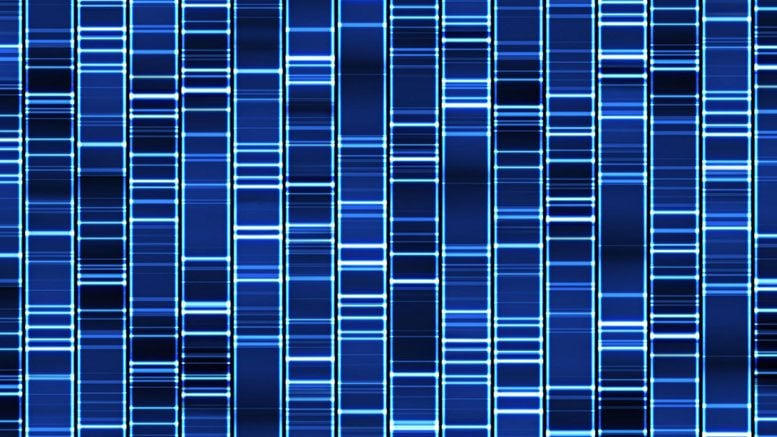
People have said that the gene-editing technology CRISPR will lead to both amazing medical breakthroughs and the end of the world.
The gene editing technology CRISPR has prompted both breathless predictions of medical breakthroughs and warnings of the apocalypse. Yale Insights asked Dr. Greg Licholai, a biotech entrepreneur and a lecturer at Yale SOM, to explain CRISPR’s potential and dangers.
Recently, HBO’s John Oliver opened a Last Week Tonight segment with a series of video clips about gene editing—some of them news reports promising amazing breakthroughs, others movie scenes depicting genetic engineering gone terribly wrong.
“It seems gene editing is going to eliminate all disease,” he concluded. “Or kill every last one of us.”
For decades, advances in genetic engineering have prompted both breathless predictions of a wondrous future and warnings of the apocalypse. Both have gotten louder in the five years since the development of CRISPR, which allows for much more precise editing of genes than previously existing tools.
In 2017, for the first time, scientists used CRISPR to repair a genetic mutation—one that could cause a heart defect—in an embryo. Reporting the breakthrough, the New York Times said that “it raises the prospect that gene editing may one day protect babies from a variety of hereditary conditions.” But in the article’s third paragraph, the newspaper added that the successful experiment “is sure to renew ethical concerns that some might try to design babies with certain traits, like greater intelligence or athleticism.”
In the last few months, more immediate concerns have arisen about CRISPR. A series of studies have suggested that CRISPR may cause cells to lose their cancer-fighting ability, and that it may do more damage to genes than previously understood. “It is important that anyone thinking of using this technology for gene therapy proceeds with caution, and looks very carefully to check for possible harmful effects,” said researcher Allan Bradley in a release from the Wellcome Sanger Institute.
Do CRISPR’s benefits outweigh the risks? Yale Insights asked Dr. Gregory Licholai, a biotech entrepreneur who serves as a lecturer at Yale SOM and chief medical and information officer at PRA Health Sciences, to explain the technology’s potential and dangers.
What is CRISPR and how is it different from the methods that have been used to manipulate genetics before?
CRISPR is this fascinating, powerful technology. It’s got a very clunky name. It’s called Clustered Regularly-Interspaced Short Palindromic Repeats. Now, what does that mean? The name actually refers to the way it interacts with DNA. It’s a way to manipulate DNA, to edit DNA, in a way that is much more powerful than previous methods, much simpler, and much cheaper. And the important part is it’s exceptionally precise.
So as you probably know, our book of life is made of DNA. DNA itself is many millions of base pairs, which is like a language. And within that language, there are certain regions that code for genes, and those genes are incredibly important because those genes go on to make up everything about us. There are 40,000 proteins that become outputs of those genes and they are involved in our health, our well-being, and any defect in those genes becomes problematic and causes disease.
What was previously attempted with gene editing was to manipulate genetic information in blocks, basically in big pieces. It’s kind of like trying to edit a book by only being able to rip out a page at a time and transfer a page at a time, without really being able to control the actual words. The power of this technology: it literally comes down to the individual letters. So the precision is far better than anything that has happened before. The excitement in the scientific community is being able to go in and very precisely make changes in DNA of actual genes that you can actually turn off bad genes or you can potentially repair genes that have got mutations in them where the code is written incorrectly.
There had been previous gene-editing technologies, such as viral gene editing, gene replacement, and those have developed over several decades. One of the most fascinating things about CRISPR is how quickly everything is developed, so in less than 10 years since the initial descriptions and initial papers were written, this technology has just exploded. It’s been less than five years since the initial patents were written, and since then at least a half-dozen companies have been formed, all of them are racing forward to try to get a leg up on each other to try to proceed with using CRISPR for various applications.
What are some of the applications, in the somewhat reasonable, predictable future?
There are three main applications for CRISPR. One is in manipulating genes to turn them on or off within people. Another is to create medications that can be infused, or in some cases, self-therapy—taking blood and certain cells out of a body, manipulating them with CRISPR, and then putting them back in. The third, which sometimes is overlooked, is actually in farming. Both farming with animals as well as farming with crops. And in fact, the application of CRISPR to foods has already been done. There are companies that have already been using CRISPR to create enhanced foods to resist bacteria or viruses. To create even better-tasting foods. And that’s already being done.
Similarly, the application of CRISPR to animals has already been done. They actually call them CRISPR mice, and they are already being used in the research community. The ability to apply it to larger animals such as food animals is in the very near future.
In terms of human health, we can divide that into two different categories. One is taking cells out of the body, manipulating them in the laboratory—either removing a defective gene or adding and enhancing an ability to do something by turning on a gene or fixing a gene—and then putting those cells back in the body. That’s one category. The other category would be actually injecting something into the body which can edit people’s genes so that within their own tissues those genes can either be turned on or off. And all of these have got some pretty profound complications and risks.
Can you give an example of a disease that could be treated?
There are over 7,000 monogenetic diseases that we can trace back to a single gene that has a defect. Often those genes have multiple mutations. But at least a single gene has been identified. The most promising application of CRISPR would be to modify those monogenetic diseases. And those monogenetic diseases, they broadly fall into two categories, curiously named toxic gain of function and toxic loss of function.
Toxic loss of function is kind of intuitive. That means the gene has got a defect in it; the person loses the function of that protein and that causes the disease. So a well-known, well-studied example would be sickle-cell anemia. A single base-pair mutation actually causes a change in the structure of hemoglobin that then creates this unique sickle-cell shape for red blood cells.
An example of toxic gain of function is a disease called transthyretin in which a mutation causes a clumping up of different proteins. And that leads to a disease called amyloidosis, where these proteins, which normally don’t stick together, because of this kink in them due to the mutation, they become very sticky. They form aggregates and those aggregates can build up in various cells in the body. Sometimes the brain, sometimes the heart.
CRISPR could potentially be useful in either one of those, and in fact there are companies that are looking at those diseases, as well as a number of others. Other monogenetic diseases would be cystic fibrosis, beta thalassemia, glycogen storage disease, Behçet’s disease, and Fabry disease. Some of these are quite rare, like Fabry disease, but some are more common, like cystic fibrosis, which is the most common genetic disease in Caucasians.
So genetic diseases is one category. Another category is oncology. It’s been well known now for some years that our own immune system has the ability to fight cancer cells and essentially dissolve micro-tumors. But cancer is a clever entity—it evades the body’s internal immune system. So what that means is that the cancer becomes invisible to our immune cells, and that invisibility is due to certain proteins that are created as checkpoints to interfere with the immune system attacking ourselves. Cancers, essentially, mimic our own cells by taking advantage of these checkpoints.
So one of the applications of CRISPR would be to remove immune cells from the body, apply the CRISPR technology, and then turn off these checkpoints and put those immune cells back in the body with the hope that then those immune cells would clear the tumor away.
What are the risks of this? Are the risks to the patient? Or to all of us?
One of the biggest risks of CRISPR is what’s called gene drive, or genetic drive. What that means is that because you’re actually manipulating genes and those genes get incorporated into the genome, into the encyclopedia, basically, that sits within cells, potentially those genes can then be transferred on to other organisms. And once they’re transferred on to other organisms, once they become part of the cycle, then those genes are in the environment.
That’s probably the biggest fear of CRISPR. Humans manipulating the genetic code, and those manipulations get passed on generation to generation to generation. We think we know what we’re doing, and we think we’re measuring exactly what changes we’re doing to the genes, but there’s always the possibility that either we miss something or our technology can’t pick up on other changes that have been made that haven’t been directed by us. And the fear then is that those changes lead to antibiotic resistance or other mutations that go out into the population and would be very difficult to control. Basically creating incurable diseases or other potential mutations that we wouldn’t really have control over.
Is there consensus on how to proceed?
There’s been discussion in the scientific community in the United States and globally about how to proceed with CRISPR. And particularly some very high-placed scientists, in the United States, for example, the former director of the National Institute of Health, have called for a self-imposed ethical moratorium on CRISPR until more is known. Not on all types of CRISPR research, but for certain types of CRISPR research. Particularly on these germline mutations that could potentially be passed on through generations. Some of the inventors of the patent-holders of CRISPR technologies who are now the inventors of the various companies in biotechnology, they’ve also imposed their own moratoria on working in germ lines until more is understood. So there are parts of the scientific community that are very concerned and are trying to be very thoughtful about how to proceed and how to proceed safely.
In the United States, there have been some regulations against moving forward in areas that aren’t safely understood. That doesn’t exist in other parts of the world, in particular in China. So there’s been several examples now of where China has leaped ahead of what’s going on in Europe or the United States but, the concern is, without the kind of regulatory and ethical safeguards that are in place in other countries.
You mentioned that there’s, in the U.S. at least, there’s a moratorium on germline mutations. Do the kinds of treatments that you’ve talked about before, do those require the germline modification, or can they be done within the stricture of that moratorium?
No, the treatment of most of those diseases, monogenetic diseases—things like cystic fibrosis, sickle-cell, beta thalassemia—those are not germline mutations. So theoretically, it would be safe to be able to treat those patients without the theoretical concern of affecting germ lines and affecting gene drive. The same thing with oncology. Theoretically you’re just taking cells out. You’re only treating immune cells and they’re not going to replicate. On the other hand, as soon as people start talking about stem cells and then manipulating stem cells and then reusing those, then those stem cells can potentially affect other cells that replicate. The risk is low, but there’s definitely a risk there.
One of the other places that this is being actively worked on is, again, in animals. The idea would be to introduce mutations into, say, malaria-bearing mosquitoes, and let them in the wild and eradicate mosquitoes. Or eradicate certain types of invasive plants by introducing some kind of genetic manipulation that gets passed on and, again, you take out that one particular species. Again, it raises concerns. We think we know what we’re affecting if we manipulate one gene for that particular species. We think we know what we’re affecting if we just affect one particular species in an ecosystem. The truth is we probably don’t, and there’s always some surprises.
You mentioned that Chinese researchers are operating in different structure. Can you expand on that, on what regulations they have and what that means in terms of their competition with companies in the U.S.?
One of the dramatic examples happened in 2016. There had been a self-imposed moratorium in the United States and Europe to work on germ cells, and germ lines. And that would include human embryos. Now, at the same time, reports came out of China that researchers had begun working on human embryos. Initially in 2015 and ’16, the reports were that the experiments were negative, and at least the Chinese researchers had claimed that they were working with nonviable human embryos anyway. In the short time since then, in the year and a half since then, those experiments have been repeated, apparently with scientific success, whatever that means. But without the kind of self-imposed regulation or even organizationally imposed regulation that we would have by the NIH or the scientific community in the United States and Europe.
Another example is that researchers in China have actually proceeded to human clinical trials using CRISPR much faster than has been possible in the United States. Normally, the clinical trial process to test any new therapy requires several very well-studied stages. The first stage is to test in animals to make sure that there’s complete safety. Then it goes into very limited testing in human beings, just for safety, and then proceeds from there. Apparently in China, they took the animal data and they went right into therapeutic trials in human beings. And the most recent reports are that somewhere between 80 and 100 people are already being tried, or already being tested using CRISPR.
We know that in China, they’re using CRISPR for cancer therapy. That’s the example where cells are taken out of the body, their immune cells are manipulated with CRISPR, and then they’re re-infused. It’s too early to tell if it’s successful or not. But there is a lot of concern that the regulatory authorities in China have been extremely permissive in allowing these technologies to move forward. And that has a lot of profound implications.
How fast is this technology changing? Given that it’s moved as far as it has in 10 years, where do you expect it to move in another 5 or 10 years?
It’s changing pretty fast. Just in the last few months, there’s new developments in the field of CRISPR. Some are around competition, with new companies being formed. In fact, one of the original developers of CRISPR science that comes out of the Broad Institute at Harvard/MIT just set up a new company. Another scientific development is that there’s now scientific evidence that perhaps in some people, they have naturally occurring immunity, if you will, to CRISPR. They have naturally occurring substances that actually will turn off any kind of CRISPR that’s put into them.
All of these things are brand new, and they’re all being sorted out by the scientific community, by these biotech companies. So it is changing very quickly. And the other thing that’s changing is the effect of this international competition. I don’t think anybody could have predicted that other countries, and China, in particular, would be so quick to embrace this technology and really leap forward ahead of everybody else.
Are there any other safety concerns with CRISPR?
As with any new technology, there could be scientific bumps in the road. The safety concern is that this field is moving so quickly and some researchers want to get into human clinical trials right away, even before the CRISPR technology paradigm has been fully validated. There are some recent reports in the scientific literature that this approach is not as precise as advertised. In other words, we think we are editing one letter of the book of life, but it actually entire pages might be getting altered in unintended areas. The long-term danger is unintended changes to the genome of an organism that go on and get carried through to the next generation. The safety risk is unknown changes in genes that get transferred to the population that could have no consequence or could be harmful.
How can we ensure that the field progresses in a safe way?
The drug development process is tightly regulated across the world. In the United States, the FDA closely monitors the safety of any investigational drug, and all CRISPR drugs intended to go into people would have to meet the same rigorous testing standards. The same situation exists for Europe and the rest of the world where regulatory authorities largely work in harmony. However, there are exceptions, as with some of the human embryo testing that has been reported in China. We should make sure that the level of international scientific regulation and cooperation continues so the scientific developments can continue but also ensure safety.

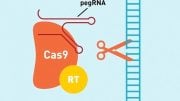
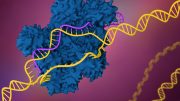
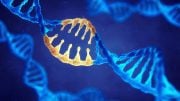

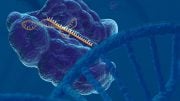


“…basically creating incurable diseases that we wouldn’t have any control over.”
That’s how this video ends.
Enter Capitalism, and then add-in a company’s potential for making a buttload of $$ to the equation. Then this will become the most likely outcome of this seeming miraculous technology.
On the other hand you prefer to write there are various places
to publish your articles or web pages. Follow these guidelines and a person do great.
Page rank is not necessary, helps. http://click.lshou.com/goto.php?url=http://data.jewishgen.org/wconnect/wc.dll%3Fjg~jgsys~josfest~gyear~2008~http://918.cafe/home/joker-123/56-joker123
…basically creating incurable diseases that we wouldn’t have any control over.”
That is, at least, until we CRISPR them again to make them curable and controllable.
We have the ability to plan our building blocks. Like any building there will be failures that we will learn from and establish building codes for future development. The real Doomsday and Risk is leaving our Genetics up to random mutations and mate selection. It would be irresponsible and negligent of our human race to actively stay ignorant to improving our genetic code.
We are more at risk of a future closer to that of “Idiocracy” without using CRISPR. This is where ignorance propagates more ignorance and begins a devolution of humanity.
DNA is a slippery greased pig, now isn’t it. Oh gee, let’s change a few letters in the encyclopedia, that couldn’t possibly affect anything else we don’t know about…WRONG. Saying oh yes, CRISPR can provoke gene drive and produce incurable diseases we have no control over, so let’s just use CRISPR to fix the problem we initially caused by using CRISPR. Are you on drugs? “Pride goeth before the fall.” Guess we’re back to Mary Shelley’s Frankenstein. What’s old is new again.
I know this site gives quality depending posts and additional stuff,
is there any other web page which provides these stuff in quality?
It’s in point of fact a great and helpful piece of info.
I am happy that you shared this helpful info with us. Please stay us up to date like this.
Thanks for sharing.
You’re so cool! I do not suppose I’ve truly read
something like that before. So wonderful to discover someone with
some genuine thoughts on this issue. Really.. thank you for starting this up.
This site is one thing that is needed on the internet, someone with a little originality!
Hi there, all is going fine here and ofcourse every one is sharing information, that’s
genuinely fine, keep up writing.
What’s up to all, the contents existing at this web site are really amazing for people experience, well, keep
up the good work fellows.
this website has copied the text from another site. this website which is yale posted this on August 21 and this post is on august 22. all they did was add advertisements
Thank
This sauce including thyme herbs is outstanding used as a
pizza covering or over fresh warm pasta, with white cheese sprayed over both prior to serving.
The natural herb thyme can be added to the scrumptious
minced olive concoction called tapanade. Matched Greek kalamata olives are placed into a food mill, in addition to
anchovies, garlic, black pepper, dried out thyme and also sliced, after that a couple of tbsps of extra
virgin olive oil are included as the mix is pulsed a number of times.
This makes an attractive spread to use inside a goat cheese and also sundried tomato-filled grilled
sandwich on sourdough.
This piece of writing provides clear idea in support of the new viewers of blogging, that genuinely
how to do blogging and site-building.
Hello, this weekend is good for me, for the reason that this time i am reading this impressive informative post
here at my house.
Competition will tear us apart.
Hi there everybody, here every person is sharing these knowledge, so it’s good to read
this website, and I used to pay a visit this web site all the time.
My site 먹튀검증
This is what i call , great article website that i have read . hope i can do same as this 파워볼게임
superb post.Never knew this, regards for letting me know. 온라인경마
Just bookmarked this blog post as I have found it rather valuable. 온라인경마
It is really a great and helpful piece of information. I?¦m happy that you just shared this helpful information with us. Please stay us up to date like this. Thank you for sharing. 파친코사이트
Great blog! I am loving it!! Will come back again. I am bookmarking your feeds also 토토사이트
Well I can say this it’s already being done in my home town and I’m sick I have hair like things coming out of my skin sores all over my body I hope every body involved in this goes to prison for a very long time
Beat the Swiss heat with our refreshing frappes! ☀️🍦 Indulge in a variety of delicious flavors like McFrappé Chocolate, McFrappé Vanilla, and McFrappé Strawberry. Here is the Mcdonalds frappes menu price List in Switzerland. McDonald’s Menu
Finding the right plate carrier that fits your budget can be a daunting task. That’s why we’ve taken the time to research and compile a list of the best plate Carriers under 200 dollars.
Wide variety of food at affordable prices, including breakfast, burgers, chicken, salads, wraps, desserts & more.Prices may vary depending on location.McDonalds
Hope Foundation stands as a sanctuary for individuals battling addiction, offering comprehensive rehabilitation services to help them overcome their struggles and rebuild their lives. As a trusted rehabilitation center in the region, Hope Foundation is dedicated to providing compassionate care, evidence-based treatments, and ongoing support to individuals seeking recovery. Let’s explore why Hope Foundation is the preferred choice for those on the path to healing in Amritsar.
Despite its remarkable achievements, Hope Foundation’s Nasha Mukti Kendra faces various challenges in its mission to combat addiction in Chandigarh. Stigma, limited resources, and societal barriers often hinder access to treatment and support services. However, the center remains steadfast in its commitment to advocating for change, raising awareness, and building community support.
Hope Foundation’s Nasha Mukti Kendra provides a safe, supportive, and therapeutic environment where individuals can embark on their journey of healing free from external triggers and influences. With comfortable accommodations, nutritious meals, and round-the-clock supervision, the center offers a sanctuary for reflection, growth, and transformation. The serene surroundings of Amritsar serve as a tranquil backdrop for self-discovery and personal renewal.
Lords Exchange is a premier cryptocurrency exchange platform designed to provide users with a seamless and secure trading experience. With its intuitive interface, advanced trading tools, and responsive customer support, Lords Exchange empowers traders of all levels to participate in the cryptocurrency market with confidence and ease. From beginners to seasoned professionals, Lords Exchange caters to the diverse needs of the trading community, offering a platform that is both user-friendly and feature-rich.